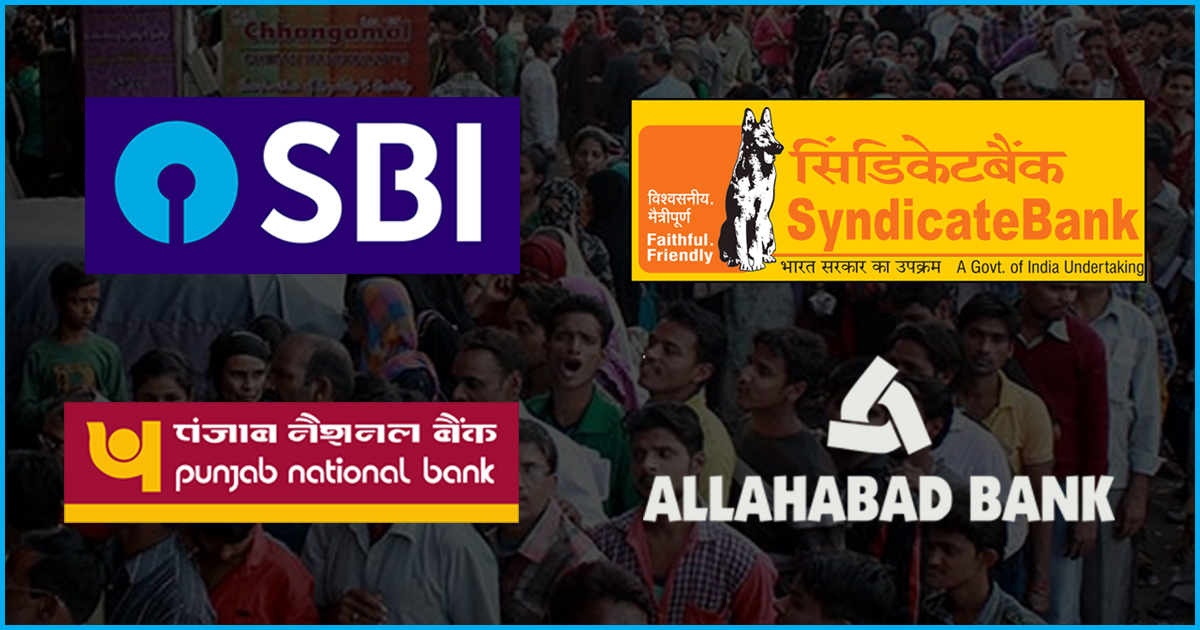
19 Public Sector Banks In India Operated At A Loss Of Rs 10 Crore Per Hour In The Last Fiscal
1 Jun 2018 1:01 PM GMT
The Gross Domestic Product (GDP) of India grew at 7.7% in Q4 for the Financial Year 2017-18, but the bad loans of 38 listed banks in India collectively crossed Rs 10.17 lakh crore.
CARE Ratings, a rating agency, in its report published last week, showed that the non-performing assets of 26 listed banks stood at Rs 7.31 lakh crore as per their declared Q4 FY18 results. Later on, the remaining 12 banks also declared their Q4 FY18 results.
According to The Economic Times, banks’ gross Non-Performing Assets (NPA) stood at Rs 8.41 lakh crore in December 2017. The State Bank Of India (SBI), country’s largest lender, reached its highest amount of NPAs worth Rs 2,01,560 crore. As many as 8,457 cases are pending in the National Company Law Tribunal and 264 in the National Company Law Appellate Tribunal as on December 31, 2017, through which banks seek to recover their dues.
In response to an RTI filed by the Times of India, the Reserve Bank of India (RBI) said that the scheduled commercial banks (SCBs) collectively wrote off as much as Rs 2.25 lakh crore through the five-year period that ended in March 2016. The scheduled commercial banks are those banks which are included in the second schedule of RBI Act 1934, which carry out the usual business of banking such as accepting deposits, giving out loans and other banking services. All Public, Private, Foreign, Regional Rural sector banks come under this umbrella.
“This could be the highest ever write-off in a five-year period in absolute terms as are the total stressed assets in the banking system,” said Abhishek Bhattacharya, director and co-head for financial institution India Ratings.
Writing-off NPAs to clean the balance sheet
“Writing off of non-performing assets (NPAs) is a regular exercise conducted by banks to clean up their balance sheets. A substantial portion of this write-off is, however, technical in nature. It is primarily aimed at cleansing the balance sheet and achieving taxation efficiency. In ‘technically written off’ accounts, loans are written off from the books at the head office, without preceding the right to recovery. Further, write-offs are ‘generally’ carried out against accumulated provisions made for such loans. Once recovered, the regulations made for those loans flow back into the profit and loss account of banks,” said the RBI.
The banks could recover only 11.85 percent (6,968 crores) of the total written-off accounts in the financial year 2014-15. The percentage improved from 11.85 to 13.8 percent (9,717 crores) the following fiscal. The SBI had written-off Rs 20,339 crore in 2016-17.
“The information on recovery from written-off accounts from FY 2011-12 to 2013-14 is not available with us,” said the Central bank.
The amount being written-off is increasing every year by an average of around Rs 12,000 crore. Banks don’t count the written-off amount when they calculate their total gross NPAs. Adding the written-off amount to the gross NPA total would paint a clearer picture of India’s bad loan crisis.
The crippling state of the Indian Banking System
Vijaya Bank and Indian Bank are the only two PSBs that have reported a net profit in FY 2017-18. 19 PSBs collectively reported a net loss of over Rs 87,583 crore. If we go by these figures, then these banks ran up a loss of almost Rs 10 crore per hour during the last fiscal.
Banks are operating at a loss of almost ten crores per hour, and the employees are getting a small wage hike of two percent shows the crippling state of the Indian Banking system. Last time a wage hike of 15 percent was given to the bank employees as compared to the two percent this year. Nearly 10 lakh bank employees were on a two-day strike from May 30-May 31 demanding an “expeditious and adequate wage revision settlement for all employees, including general managers.”
 All section
All section













